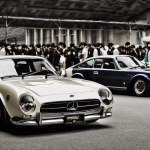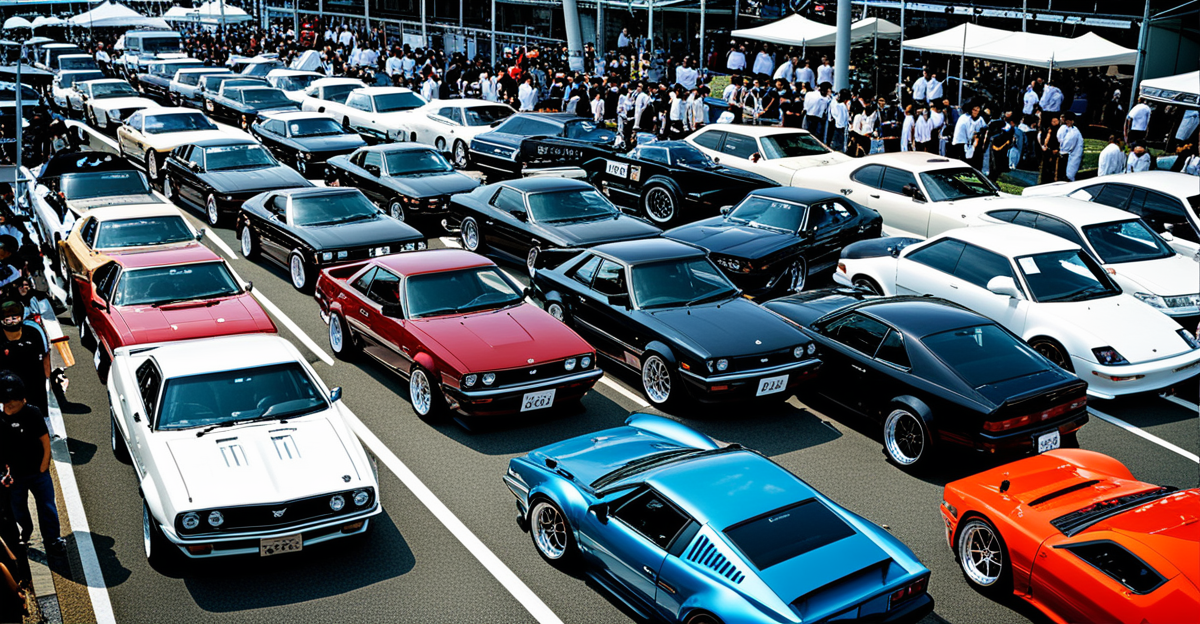The Daikoku Car Meet draws automotive enthusiasts to Yokohama’s iconic Daikoku Parking Area, creating a vibrant scene of rare and customized vehicles. This legendary gathering blends car culture, community, and high-octane passion, offering a unique experience for visitors. Understanding the meet’s atmosphere, rules, and access details ensures a memorable visit to one of Japan’s most celebrated automotive events.
Essential Guide to the Daikoku Car Meet Experience
You can find practical information about attending on this page: daikoku-car-meet.com. Daikoku’s identity stands apart due to its strong sense of community, heritage, and inclusivity. Over decades, the meet transformed from a highway rest stop into a thriving hub for car enthusiasts who bring together a spectrum of vehicles, from meticulously tuned Japanese icons to rare international imports. Events at the Daikoku Parking Area unfold organically, often without formal organization, allowing spontaneous interaction among visitors.
Also to see : Top reasons to attend yokohama's iconic daikoku car meet
Access is unique: there is no public transport or pedestrian entry. Only vehicles—whether your own or a taxi—can get you past the gates and walls. Detailed driving directions and parking tips are essential, especially for international travelers confronting exclusive entry and Japanese road rules. This adds an unintentional filter, shaping Daikoku’s relaxed, authentic atmosphere where only truly enthusiastic visitors tend to arrive.
To participate respectfully, visitors should adhere to etiquette guidelines: keep noise down, respect vehicle owners’ privacy (always ask before photographing), and avoid disruptive behaviors. Local police presence helps maintain safety, and the convenience store on-site ensures basic amenities are available—making the experience enjoyable and secure for all.
Topic to read : How can you efficiently remove ice from your car’s windshield?
Planning Your Visit: Events, Schedule, and Participation
Event schedules, best and quiet times to attend, and night versus day experiences
Daikoku Car Meet is unique: there is no official schedule, ticket system, or membership required. Enthusiasts can arrive at any time, but certain periods consistently attract more activity. The most vibrant meets generally unfold on Friday and Saturday nights, creating an energetic ambiance with rows of high-performance vehicles. In contrast, Sunday mornings are known for relaxed gatherings, showcasing a quieter but equally passionate crowd.
Nighttime visits offer spectacular views with illuminated cars but do come with increased police oversight and a higher likelihood of dispersals if things get rowdy. If you prefer a calm experience, weekdays and early mornings are best. The event’s spontaneous nature means every visit can surprise even seasoned attendees.
Details on entry—free admission, how to join, and parking logistics
Admission is always free, and anyone with a car—from local commuters to international enthusiasts—can participate. Attendance requires no prior organization. Just drive to the parking area, and follow any instructions from security personnel. Consider arriving early on busy weekends, as parking can fill up quickly during peak times.
Practical advice for international visitors: car rentals, group tours, local travel tips
Access is possible only by car or taxi; there are no public transport options directly to the site. Renting a car is straightforward with major brands near Tokyo and Yokohama. Alternatively, some companies organize group tours specifically for car enthusiasts, offering a stress-free way to experience the meet. Remember to bring your international driver’s permit and consider local traffic rules and etiquette for a smooth visit.
Highlights of Daikoku Car Meets: Cars, Culture, and Community
Types of vehicles showcased: iconic Japanese cars, modified sports cars, and international models
Daikoku Car Meet is celebrated for an extraordinary collection of vehicles. Expect to see legendary Japanese tuner icons like the Nissan GT-R, Toyota Supra, Honda NSX, and rarities from Mazda, Subaru, and Mitsubishi. Not limited to domestic legends, these meets frequently feature international muscle and supercars, alongside lovingly restored vintage rides. The impressive diversity—from top modified cars with bold wraps and giant spoilers, to subtle daily drivers—means every enthusiast finds something inspiring and photogenic.
Community interactions: socializing with enthusiasts, cultural exchange, and grassroots atmosphere
A true highlight is the grassroots community vibe. Enthusiasts mingle freely, discussing modifications, sharing technical insights, and swapping stories from the Japanese and worldwide car scenes. The absence of formal structure or entry gate promotes spontaneous interaction. Japanese car culture’s respect for both innovation and tradition shines, fostering an environment where new visitors, long-time regulars, and even international guests exchange ideas, photographs, and contact details.
Tips for enjoying and documenting the experience: photography etiquette and best photo opportunities
For those seeking standout photos, early daytimes and Sunday mornings tend to deliver the widest vehicle variety and gentle lighting. Always request permission before photographing interiors or close-ups of rare cars, as politeness goes a long way. Some of the best shots are found in wide-angle views capturing the sheer scale of the gathering, group lineups, and candid moments of camaraderie among enthusiasts.











